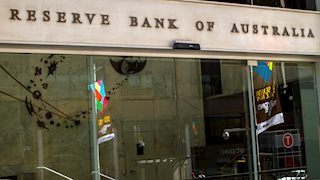When is the RBA Rate Decision and how could if affect AUD/USD?
|
RBA overview
Early on Tuesday, the Reserve Bank of Australia (RBA) will announce its decision on interest rates at 2:30 pm AEST am in Sydney, Australia, 4:30 am GMT.
The Australian central bank is widely expected to hold its present monetary policy unchanged. However, investors will seek clues of future rate cuts as the RBA officials’ recent appearances portray intact bearish bias at the Aussie central bank.
Market expectations
TD Securities anticipate no fireworks at today’s RBA meeting as it says:
"The Bank is likely to keep the cash rate on hold at 1%. We expect the Bank to reiterate it is in 'wait and see' mode as it assesses the impact of tax cuts, rate cuts and easing in macro-prudential policy since May. A soft GDP on Wed could see the market bring forward a RBA cut to Oct."
The Australia and New Zealand Banking Group (ANZ) also anticipates no change in the RBA’s monetary policy considering recent economics:
"Coming up today, we think the RBA will remain on the sideline for another month, even as it faces the prospect of yet another downgrade to its 2019 growth forecast. The RBA will be aware that growth looks likely to severely undershoot its forecasts. We’re expecting a soft 0.2% q/q rise for Q2 GDP on Wednesday, which would see annual growth dip to 1.1% y/y. This could see serious consideration given to cutting again. But, offsetting this, employment was solid in July, consumers are more positive about their finances, and there are signs that the housing market is turning."
Westpac highlights the monetary policy statement for fresh impulse amid fewer chances of a move during the present meeting:
"Markets price only about a 10% chance of the RBA Board cutting its cash rate from 1% to 0.75% today (2:30pm Syd/12:30pm Sing/HK), with public rhetoric indicating no rush to move again. Assuming a steady hand, the main focus should be on any change in August’s pledge to “ease monetary policy further if needed.”"
How could the RBA decision affect AUD/USD?
While the US-China trade stalemate and dovish rhetoric from the RBA policymakers may keep signaling the RBA’s dovish statement and a following decline in the AUD/USD pair, recently released Aussie employment data and China’s Caixin manufacturing gauge could push the central bank towards the “wait and see” approach, which in turn might offer intermediate relief to the Aussie pair.
Technically speaking, the pair needs to offer a sustained break below nearly four-week-old support-line, at 0.6695, in order to please sellers with August month low of 0.6677. Should prices keep trading above the immediate support-line, buyers may observe highlights overbought conditions of 14-day relative strength index (RSI) to trigger pair’s pullback towards a week-old falling trend-line at 0.6725, followed by 21-day exponential moving average (EMA) level of 0.6771. However, overall bearish bias can’t be reversed unless the quote successfully traders above June low of 0.6831.
Key Notes
AUD/USD Analysis: RBA’s dovish stance to remain firmly in place
AUD/USD clings to 0.6720 ahead of Australia data/RBA, trade/political pessimism prevail
About the RBA rate decision
RBA Interest Rate Decision is announced by the Reserve Bank of Australia. If the RBA is hawkish about the inflationary outlook of the economy and rises the interest rates it is positive, or bullish, for the AUD. Likewise, if the RBA has a dovish view on the Australian economy and keeps the ongoing interest rate, or cuts the interest rate it is seen as negative, or bearish.
Information on these pages contains forward-looking statements that involve risks and uncertainties. Markets and instruments profiled on this page are for informational purposes only and should not in any way come across as a recommendation to buy or sell in these assets. You should do your own thorough research before making any investment decisions. FXStreet does not in any way guarantee that this information is free from mistakes, errors, or material misstatements. It also does not guarantee that this information is of a timely nature. Investing in Open Markets involves a great deal of risk, including the loss of all or a portion of your investment, as well as emotional distress. All risks, losses and costs associated with investing, including total loss of principal, are your responsibility. The views and opinions expressed in this article are those of the authors and do not necessarily reflect the official policy or position of FXStreet nor its advertisers.